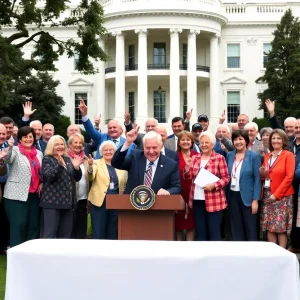Plasma Donated in East Kansas City Could Traverse Oceans in the Form of Lifesaving Therapies
In East Kansas City, at CSL Plasma on Broadway Boulevard, individuals line up early in the morning to donate blood plasma, embedding themselves in an elaborate network of bio-pharmaceuticals, a multinational industry worth $35 billion. The plasma drawn from these donors could potentially find its way into lifesaving therapeutics half a world away. Motivations for plasma donations often stem from financial needs, with many donors supplementing their incomes through the payments received for their vital contribution.
Relying on Plasma Donation to Supplement Income
Michael Mullen, for instance, has been a regular plasma donor for 12 years, committing to the process every Tuesday and Thursday. The income generated, amounting to slightly over $100 per week, complements his earnings as a chef. He admits, “It helps supplement bill paying,” and expresses concerns about managing without the additional income. Similarly, Kelcey Gordon, unemployed and dependent on the biweekly donations for survival, expresses gratitude for the opportunity.
Fuelling a Global Pharmaceutical Market
Donors such as Mullen and Gordon form a critical foundation for the plasma pharmaceutical industry, providing the raw material necessary for the production of a vast spectrum of medicines. The donated plasma is meticulously processed, separating its protein constituents to formulate treatments for rare, chronic conditions like immune deficiencies, autoimmune diseases, and bleeding disorders. Despite its humble collection point on East 63rd Street, this plasma could eventually find itself converted into remedies sold at hefty sums per dosage, potentially serving patients based in different corners of the globe.
U.S: A Leading Contributor to Global Plasma Supplies
The United States, due to regulations permitting companies to compensate plasma donors and allowing frequent donations, provides approximately 70% of the world’s total plasma contribution. Peter Jaworski, a Georgetown University professor who studies the plasma economy, refers to the nation as “the world basket of plasma.” Despite concerns on the potential long-term health impacts of frequent plasma donations, advocates for the system argue that paid donations are critical to meeting the high demand for plasma-based treatments.
From Donation to Therapeutic Application: A Glimpse into the Journey of Plasma
Donated plasma undergoes fractionation, separating it into various protein constituents. Following a rigorous testing and purification process, which could span up to a year, the processed plasma is pooled with contributions from other donors and converted into various pharmaceutical products. The safety of these fractions is considerably high as a result of effective, stringent testing methodologies, and the precondition that plasma is used only if a donor has passed a health screening and donated at least twice. Any residual viruses are also eradicated before plasma is utilized in medicine.
Concerns Regarding Frequent Donations and Disadvantaged Groups
However, there is growing concern that frequent plasma donations over a prolonged period could pose potential health risks to donors, despite the lack of concrete evidence. Critics suggest that disadvantaged societal groups might carry the brunt of these risks, given the prevalence of donation centers in lower-income neighborhoods, and a reliance on incentive programs designed to encourage repetitive donations. Dr. Morey A. Blinder, a hematologist at Washington University, emphasizes the need for comprehensive studies assessing the health impacts of habitual plasma donations. He calls for more regular health monitoring of donors, reducing donation frequency, and infusion of more fairness into the compensation structure.
The Vital Role of Plasma Donations in Healthcare
While debates continue about the best practices for plasma donations, it remains an incontrovertible fact that the end products of collected plasma provide hope and relief for numerous patients worldwide. The United States, in allowing paid plasma donations, has successfully managed to meet not only its own requirements, but also those of many other nations.. Therefore, it’s up to healthcare communities to strike an ethical and sustainable balance, ensuring both the safety and wellbeing of plasma donors and recipients.







